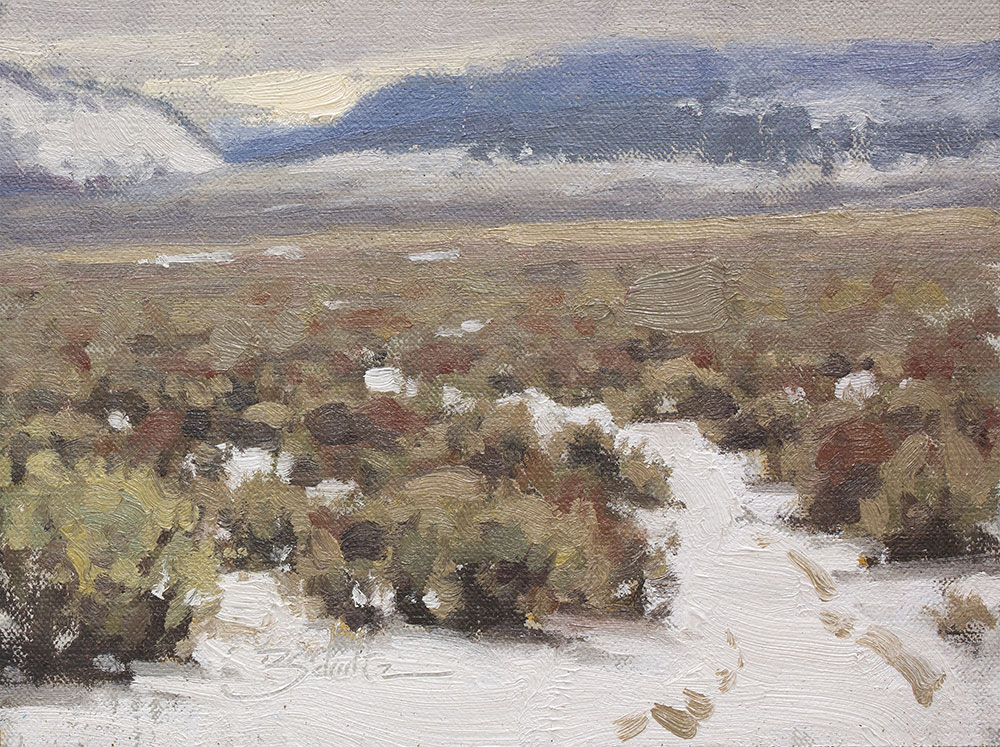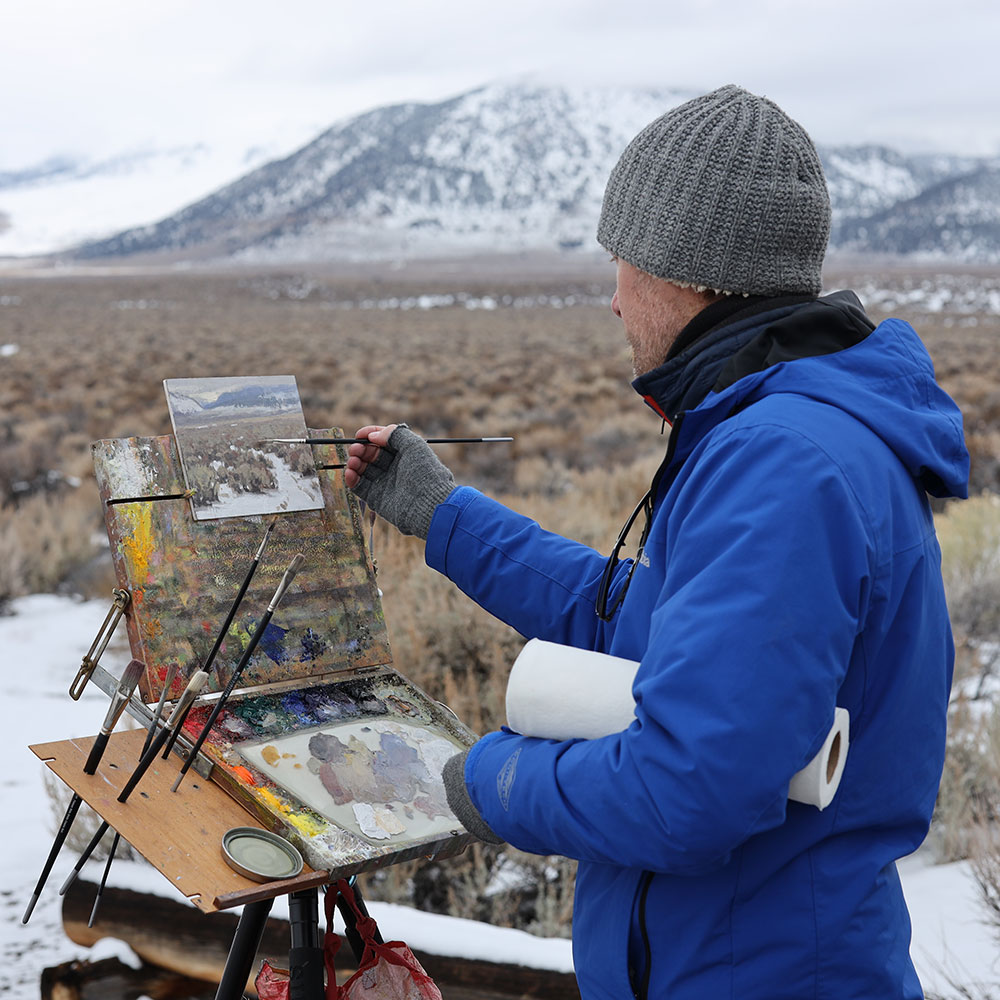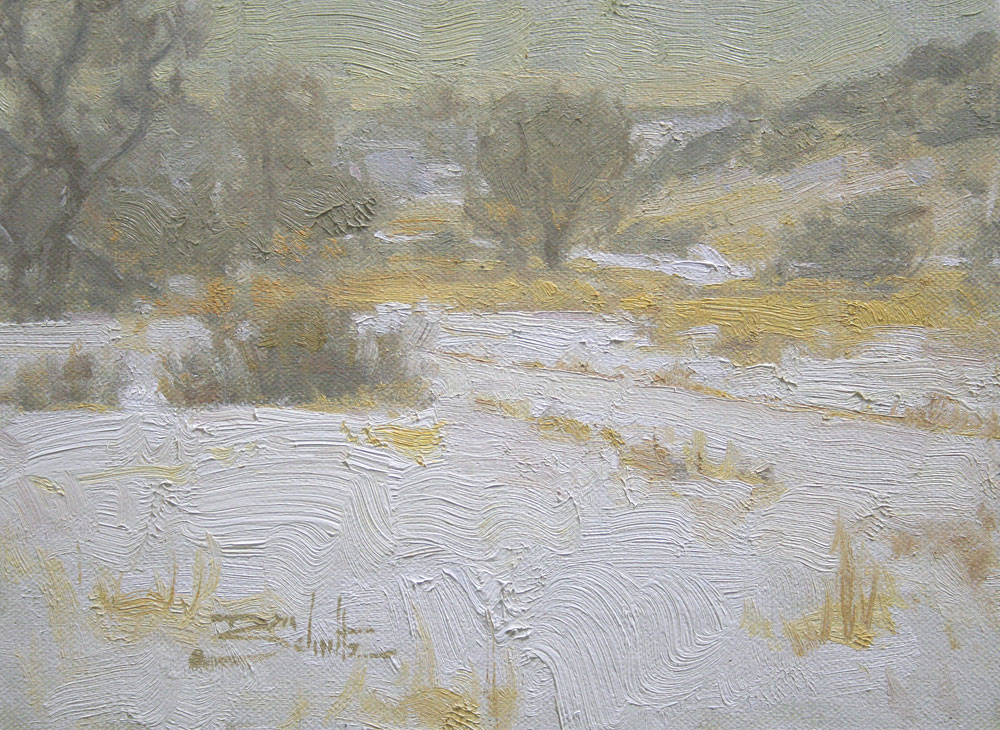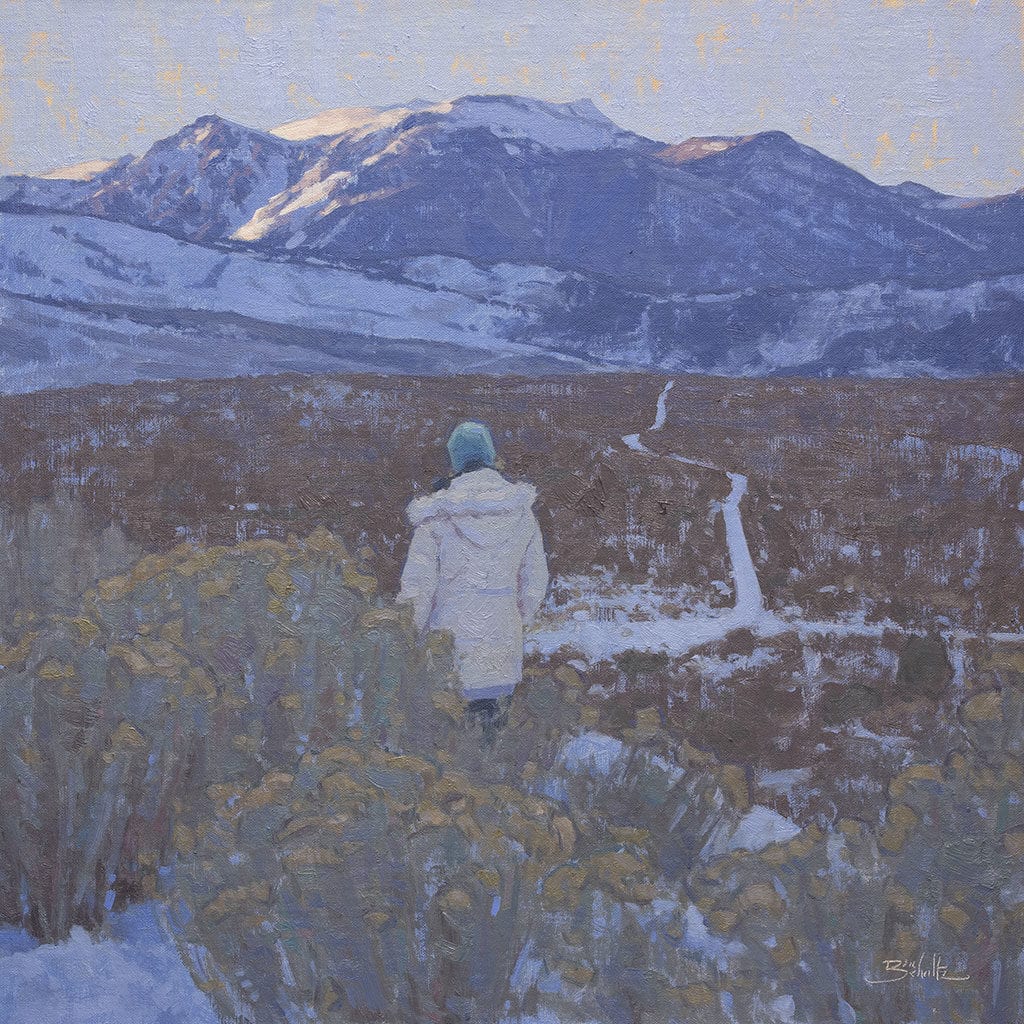
8″ x 10″ – Oil
There’s no painting like snow painting! Ever tried painting snow? …While also standing in snow? …Outside?
A few years ago, my family and I spent several days in California’s Eastern Sierras. We stayed in the town of June Lake which had snow on the ground when we arrived, and a few more inches fell during our stay. Temperatures were in the 20s (F) so we bundled up the kids (and ourselves) and enjoyed a little white before Christmas.
I managed to paint three small pieces while exploring the beautiful area. And let me be the first to state the obvious — painting in the snow is cooold. Beyond recommending that you dress as warmly as possible, I have a few, quick tips to share that might be of help when painting snow outdoors.

6″ x 8″ – Oil
- Prepare for the extra brightness, especially if the sun is out and reflecting off the snow. Set yourself up in the shade if possible. Lay down a black garbage bag or dark-colored blanket below your easel. It can reduce the brightness that’s blasting up from behind your palette and canvas.
- Pay attention to your feet. Waterproof shoes are great. Also, bring along something to insulate your feet from direct contact with the snow as you paint. Try standing on a piece of thick cardboard or plywood. For you coastal-dwellers, a boogie board works great!
- Pay attention to your hands. Fingerless gloves (perhaps even more than one pair at a time!) will allow you to grip your brushes as usual.
- Try hand and foot warmers inside your gloves and shoes. They can be great for those extra cold sessions.
- Bring your easel inside overnight (or at least your paint and palette). You want to keep your paint warm so it doesn’t get cold and stiff (and lonely) in the car. Stiff paint is tough to use.

Painting snow outdoors is the best way to study its variety of colors and effects on the landscape. Plus, your friends will think you’re extra tough. So give it a try sometime. Hopefully these tips will make your next snowy painting session a little easier.
–Dan Schultz

6″ x 8″ – Oil
Editor’s note:
We thought you may enjoy this bonus advice from Richard Schmid, from his book Richard Schmid Paints Landscapes, Creative Techniques in Oil:
“I have encountered three problems in winter painting. First, because the day is shorter, an early start is important. Second, it is often necessary to work with warm gloves, which can be cumbersome. I usually alternate, working with gloves for the block-in and broad areas, then removing the gloves for detail work. Third, the consistency of oil paint changes in low temperatures, causing the paint to lose its plasticity and rendering it stiff and unworkable. Adding small amounts of turpentine will usually restore the paint’s working qualities. The rule, of course, is to use the least possible turpentine especially in heavy, impasto brushwork. Rather than add too much turpentine, it might be better to substitute a knife for the brush. It is sometimes suggested that alcohol be added to the oil paint in cold weather. To the painter, perhaps; to the paints, never.”




